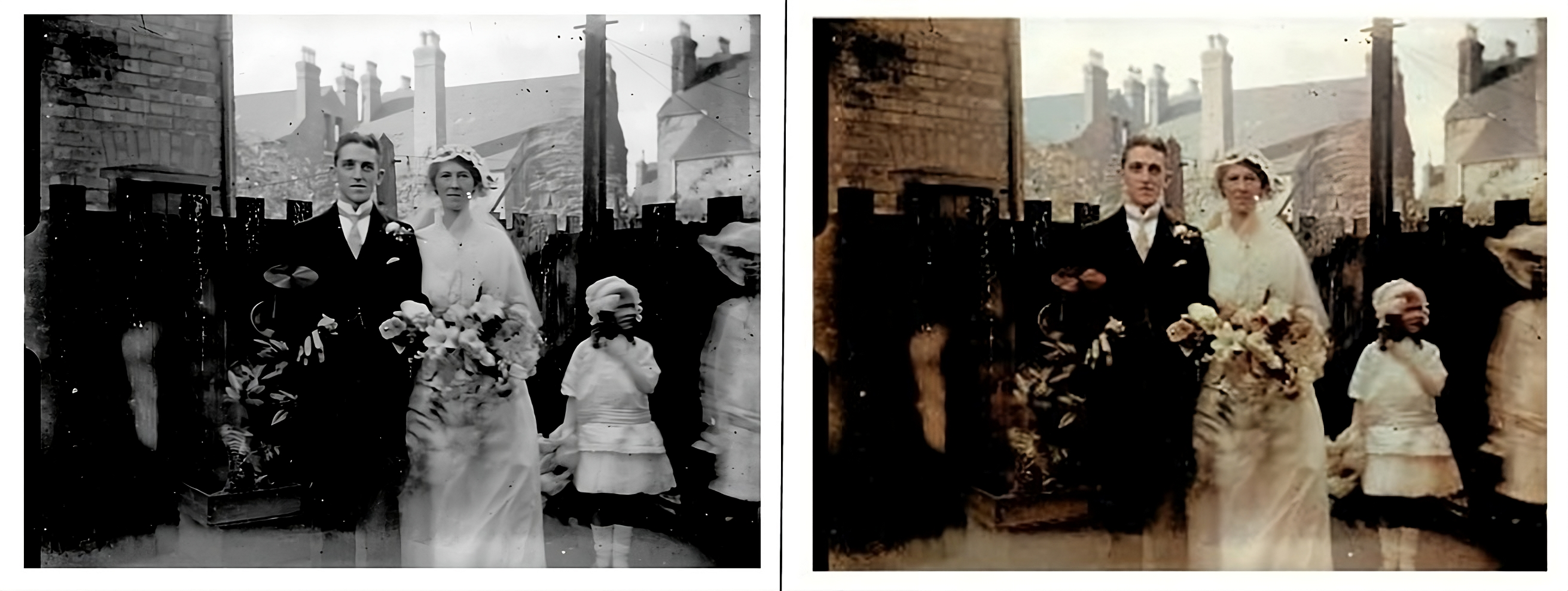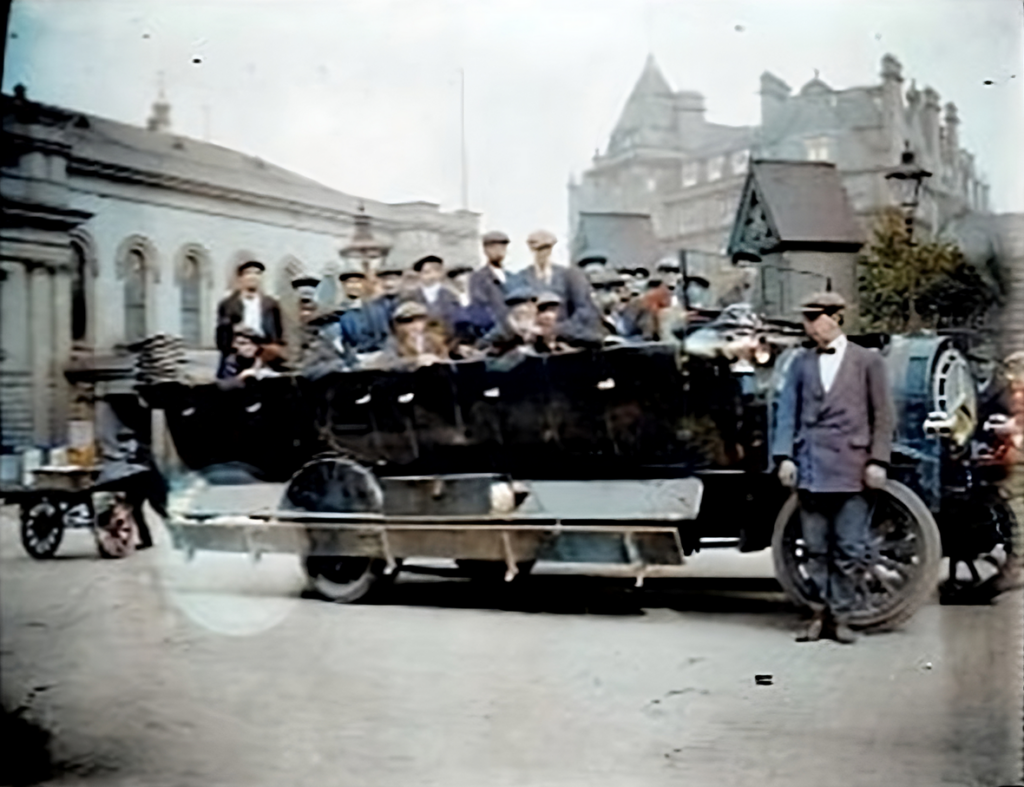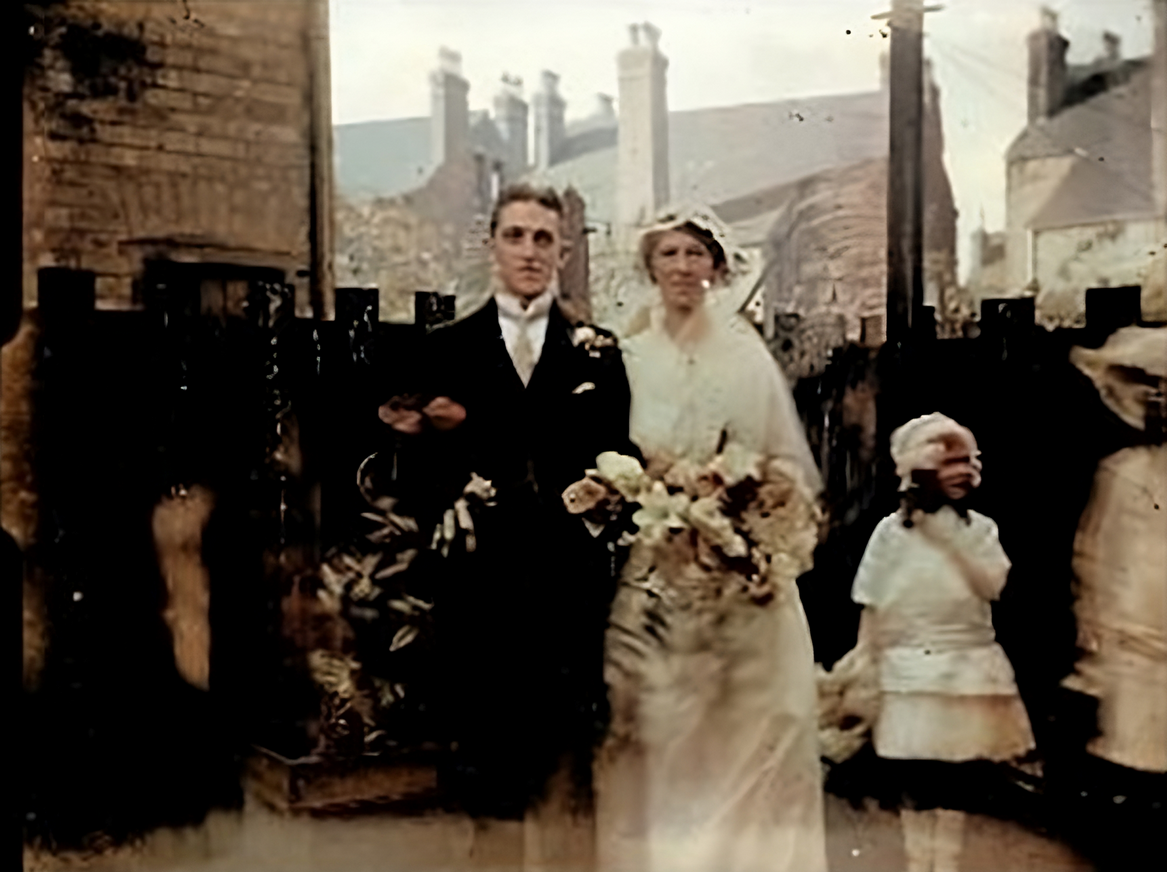This is a story of one man’s journey in seven photographs. It was actually meant to be a discussion about the superb resolving power of lenses and emulsions in the very early 20th century. However a much more poignant story began to emerge.
As background I have long collected glass plate negatives and have always been interested in what photographers thought it important to photograph in the past. This is a family story from an unknown man for one period of his life but concerned much wider issues. The negatives were scanned, made into positives and I have juxtaposed the same but coloured photographs alongside. The monochrome photographs are an important and evocative element in the story but the coloured ones ‘humanise’ the people in them. Could I suggest that you scroll through the photographs slowly taking in the detail of each, there is no distracting text in between them. The denouement is the seventh photograph. There will be another paragraph or two from me at the end and also technical details.



















I hope you will agree the photographs tell the story. Our man, I believe, is the one in the penultimate photograph of the charabanc, standing to the right wearing the tie although it is difficult to tell as everyone is wearing the large caps very fashionable at the time. The dichotomy, if you noticed, is that the new recruits for the British army are being transported to the nearest barracks in a vehicle made by Mercedes.
I was able to identify the year as 1914 and to the month of August as the last photograph shows a detail from photograph 5 with a copy of the original poster which was not issued until August 17, 1914 and it is in excellent condition so had not, in all probability, been there very long.
World War 1 started for the UK on 4th August, 1914. This also is a good example of what this article should have been about, the acuity, superb definition and resolving power of the camera lenses in use at this time and the quality of the emulsions that coated the glass plates. You will also see that the photographic detail of the poster appears in black although it was printed in red to be prominent on a notice board because of its importance in clarifying an enlistment issue. You will notice also in the coloured photograph of the detail it too appears in black and the colouriser I used (it is that good) would have picked the red up if it had been there in the original. I conclude from this that the emulsion was orthochromatic which renders reds as blacks.
I hope you have found the exploration of this past photography interesting and it draws together a timeless theme – when war comes first find a woman, then marry and then enlist; it happened in my family both in WW1 and WW2 and is a timeless story. If anyone knows the location of these photographs please let me know and if someone who reads this knows of the family even better but I would think that after this stretch in time they will remain anonymous. In a strange way I feel that I have got to know them through their photographs and hope the man survived the war. To the right of the notice board in photograph 5 is a three word, large lettered sign from the top to second floor level of the building, the last word I believe is ‘ALES’ so perhaps a brewery or a large pub. Many breweries at this time were situated in town centres and some still are.The church/cathedral is in a similar style to the Holy Trinity Church at Blyborough, Suffolk (sometimes known as Blyborough Minster) but it is not this.
I have done very little manipulation with the negatives/positives so they are as they appear; 110 years later. There are other negatives in this particular box, mainly portraits, I would think taken at the time of the wedding or shortly before or thereafter.
Technical details:
Photographer, Camera, Lens; Unknown
Glass Plates 3.25” x 4.25”: Unknown Manufacturer.
Image Software: FastStone Image Viewer.
Colourising Site: palette.fm
Scanner: Epson Stylus SX415 (personally adapted for copying film).
Scan Resolution: 1280 dpi (Original)
Share this post:









Comments
Joshua on One Man’s Journey in Seven Photos
Comment posted: 17/11/2024
Comment posted: 17/11/2024
Comment posted: 17/11/2024
Comment posted: 17/11/2024
Joshua on One Man’s Journey in Seven Photos
Comment posted: 17/11/2024
the look of the building with the sign i would suggest its probably Arms not Ales?
interesting post thanks for sharing!
Jeffery Luhn on One Man’s Journey in Seven Photos
Comment posted: 19/11/2024
I have nothing to offer about the identity of the subjects, but I want to thank you for writing the post. It informs us that photos we take today will preserve a slice of time for a century or more. My great uncle was an avid photographer from age 7, beginning in 1900. He photographed his classmates, street scenes, and the aftermath of the 1906 San Francisco earthquake. Fortunately, he provided details on the envelopes of his plates and on later prints. I was able to get in touch with many of the subjects and their families around 1970. Quite a thrill for everyone! Thanks for your posting!
Comment posted: 19/11/2024